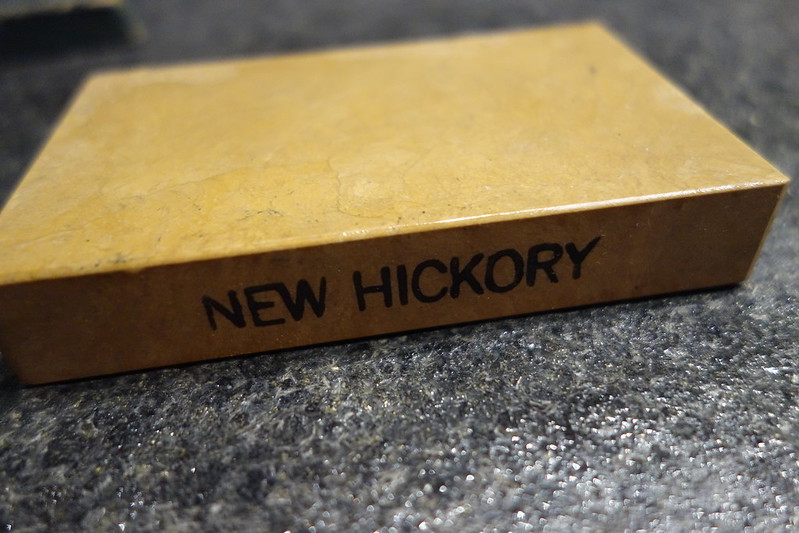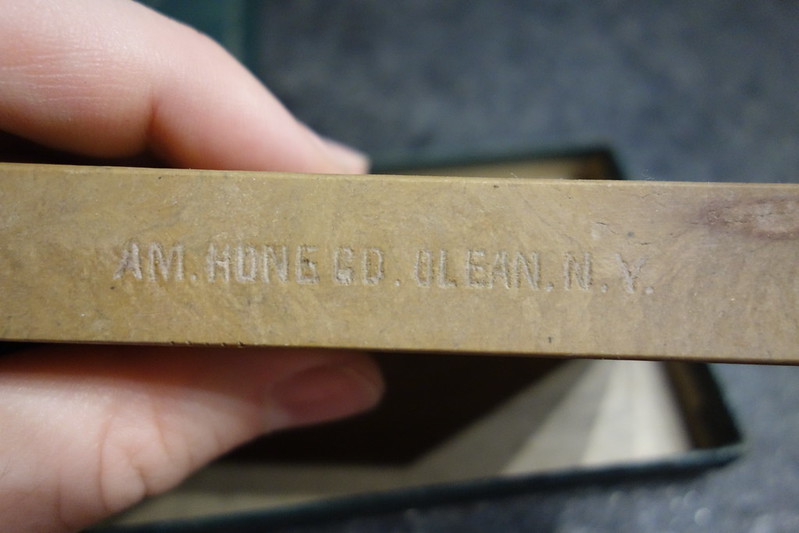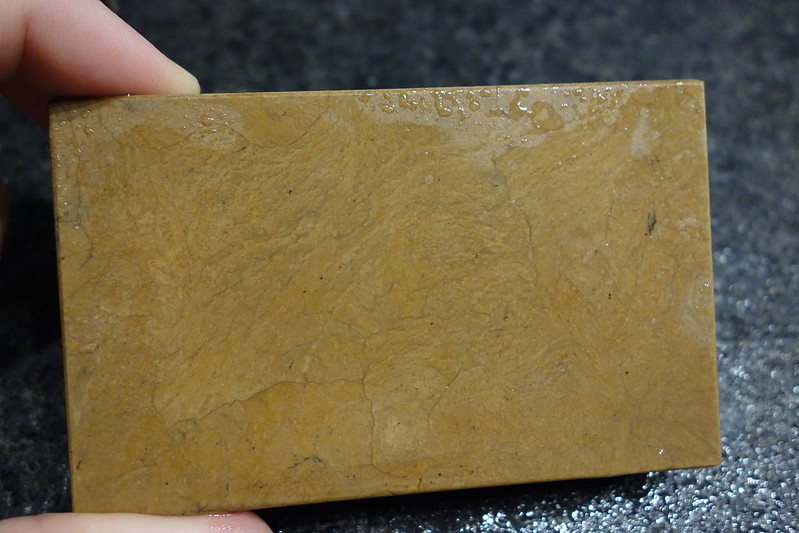Introduction:
Doing my researches digging deep in the archives of the WWW and Newspapers i actually found another interesting and funny story to tell. Its about the phenomenal "Old Germany Hickory Hone".....did you ever heard of if ? I dont think so, actually i found no evidence a post like this was ever created....
here is the story to be told:
Ok lets start with the background, it starts in the years 1884 until 1885. The articles were printed with the nearly the same content at different Newspapers. Reno Gazette Journal, St. Louis Post Dispatch, The Argos Reflector, The Morning Astorian, Pittsburg Post Gazette, The Times.....probably there were more....
There was an article named "Some Razor Hones". A interview like told story to a "Barber" about different types of hones for honing razors. They ask questions which hones can be used. Nearly the end of the story they come to a point where the Barber is asked: "What do you consider the Best Hone ?
and now guys, what comes now ? any guesses ?
The Barber replies: "The Hone i like the best and the most wonderful in material and construction is that of petrified German Hickory. Here is one", and he exhibited a small, smooth, dark stone, hard as adamant, mounted in a wooden block. "This german hickory", he continues "is in itself a wood almost as hard as a stone. It is cut from large cultivated forests, then carefully seasoned, sawed into small blocks about this size and imbedded in a peculiar wet clay soil, where it is allowed to remain about 8 years. When removed the wooden blocks are discovered to have turned into stone. Their manufacture is confined solely to certain parts of Germany and Prussia.The experiment of petrification in this particular line has been tried in many lands, but has never been proven successful outside the countries named. That is, I guess because of the peculiar soil. Westphalia, in Prussia, is where they are principally made and there is one mill there which constantly employs 100 hand in cutting, mounting and dressing these hones.".......the story keeps going some sentences further, i skipped them....
So what ? 100 People producing all day these hones, the best hones in the world, wood petrification within 8 years :shrug: opcorn:
opcorn:
So any body heard of those wonder hones ? Now comes an additional part....
The story continues in 1906, Harrisburg Daily Independent:
"Women Razor Sharpener", "She hones 10.000 a year and makes money with it"
The story kind of continues with a women who is honing razors to do her living with it. She uses "A Hickory Hone and an imported German Razor Hone".
So far so interesting, now i did search for some findings of those hones, to proof their existence :gl:
So what do you all think about the story ? Anybody owns a Germany Hickory Hone ?
If so please share pictures here :rofl2:
Doing my researches digging deep in the archives of the WWW and Newspapers i actually found another interesting and funny story to tell. Its about the phenomenal "Old Germany Hickory Hone".....did you ever heard of if ? I dont think so, actually i found no evidence a post like this was ever created....
here is the story to be told:
Ok lets start with the background, it starts in the years 1884 until 1885. The articles were printed with the nearly the same content at different Newspapers. Reno Gazette Journal, St. Louis Post Dispatch, The Argos Reflector, The Morning Astorian, Pittsburg Post Gazette, The Times.....probably there were more....
There was an article named "Some Razor Hones". A interview like told story to a "Barber" about different types of hones for honing razors. They ask questions which hones can be used. Nearly the end of the story they come to a point where the Barber is asked: "What do you consider the Best Hone ?
and now guys, what comes now ? any guesses ?
The Barber replies: "The Hone i like the best and the most wonderful in material and construction is that of petrified German Hickory. Here is one", and he exhibited a small, smooth, dark stone, hard as adamant, mounted in a wooden block. "This german hickory", he continues "is in itself a wood almost as hard as a stone. It is cut from large cultivated forests, then carefully seasoned, sawed into small blocks about this size and imbedded in a peculiar wet clay soil, where it is allowed to remain about 8 years. When removed the wooden blocks are discovered to have turned into stone. Their manufacture is confined solely to certain parts of Germany and Prussia.The experiment of petrification in this particular line has been tried in many lands, but has never been proven successful outside the countries named. That is, I guess because of the peculiar soil. Westphalia, in Prussia, is where they are principally made and there is one mill there which constantly employs 100 hand in cutting, mounting and dressing these hones.".......the story keeps going some sentences further, i skipped them....
So what ? 100 People producing all day these hones, the best hones in the world, wood petrification within 8 years :shrug:
So any body heard of those wonder hones ? Now comes an additional part....
The story continues in 1906, Harrisburg Daily Independent:
"Women Razor Sharpener", "She hones 10.000 a year and makes money with it"
The story kind of continues with a women who is honing razors to do her living with it. She uses "A Hickory Hone and an imported German Razor Hone".
So far so interesting, now i did search for some findings of those hones, to proof their existence :gl:
So what do you all think about the story ? Anybody owns a Germany Hickory Hone ?
If so please share pictures here :rofl2:






